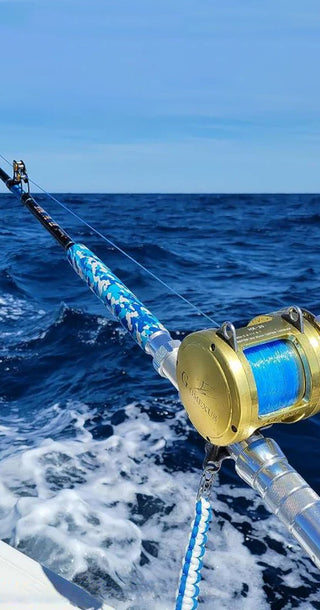Fishing is as much an art as it is a science, and one of the most critical factors that can make or break your trip is the size of the lure you choose. With an overwhelming number of options available, it's natural to wonder, "What size lure should I use for each type of fish?" This guide aims to demystify the process of selecting the right lure size for different species, thereby maximizing your chances of success.
Understanding the Basics of Lure Selection
Before diving into the specifics, it's essential to grasp the fundamentals that underpin lure selection. Different fish species have distinct feeding habits, mouth sizes, and behaviors, all of which influence the optimal lure choice.
Why Lure Size Matters
The size of the lure impacts not only the attractiveness to the fish but also the way it moves through the water. Larger lures might mimic bigger prey but can be intimidating for smaller fish. Conversely, smaller lures might be overlooked by larger, more aggressive fish that seek substantial meals.
Factors to Consider When Choosing Lure Size
Various elements play a role in selecting the perfect lure, including:
- Water Temperature: Warmer water generally means that fish are more active and might go for larger lures.
- Fish Behavior: Understanding whether the target species is aggressive or cautious can guide your choice.
- Water Clarity: Clear water necessitates more realistic, often smaller lures.
Lure Size Guide for Different Fish Species

Bass Fishing
Bass are known for their aggressive nature, but their preferences can vary based on various conditions.
Optimal Lure Size for Bass
- Small Bass: For smaller bass, lures between 2 to 3 inches are ideal. These include soft plastics and small crankbaits.
- Medium Bass: Medium-sized bass might be more tempted by lures ranging from 3 to 4 inches, such as medium crankbaits or soft jigs.
- Large Bass: Big bass often go for larger prey, making lures from 4 to 6 inches like swimbaits and spinnerbaits excellent choices.
Trout Fishing
Trout are more cautious feeders and can be picky about lure size.
Optimal Lure Size for Trout
- Small Trout: For targeting smaller trout, lures sized 1 to 2 inches, including small spinners and insects, work well.
- Medium Trout: Medium trout usually prefer lures around 2 to 3 inches. Consider using spoons and small crankbaits.
- Large Trout: In waters with larger trout, lures ranging from 3 to 4 inches, like larger spoons and plugs, are more effective.
Pike Fishing
Pike are apex predators and will often strike larger lures.
Optimal Lure Size for Pike
- Small Pike: For smaller pike, consider using lures around 3 to 4 inches, such as medium-sized spinners.
- Medium Pike: Medium-sized pike are best caught using lures between 4 to 6 inches, like large spoons and crankbaits.
- Large Pike: Large pike require hefty lures, typically in the 6 to 8-inch range. Opt for big swimbaits and large spinnerbaits.
Seasonal Variations and Lure Size
Spring Fishing
During spring, fish are usually more active due to warmer water temperatures. Larger lures tend to work better in this season since fish are more aggressive.
Summer Fishing
In the peak of summer, fish can become sluggish. Smaller lures are often more effective as they mimic the abundant smaller prey available in this season.
Fall Fishing
Autumn is a time of increased feeding in preparation for winter. Fish are likely to be less selective, and mid-sized lures tend to yield the best results.
Winter Fishing
Fish activity decreases in winter, so smaller, slow-moving lures are generally the most effective.
Matching Lure Size to Water Conditions
Clear Water
In clear water, subtlety is key. Smaller, more realistic lures are effective since fish can scrutinize their potential prey closely.
Murky Water
In contrast, murky water demands larger, more vibrant lures that can attract attention through vibrations and contrasts.
Presentation Techniques Based on Lure Size
Small Lures
Small lures require finesse techniques, such as slow retrieves to mimic the natural movement of smaller prey.
Medium Lures
Medium lures provide versatility and can be worked with moderate retrieves, jigging, or even topwater techniques, depending on the target species.
Large Lures
Large lures often need more aggressive presentations, like fast retrieves or jerking motions, to incite predatory strikes.
Common Misconceptions
"Bigger is Always Better"
Many anglers fall into the trap of thinking that bigger lures will always catch bigger fish. While this is sometimes true, it's not a rule. Understanding the feeding behavior of your target fish is far more critical.
Ignoring Seasonal Adjustments
Another common misunderstanding is not adjusting lure size based on the season, which can drastically impact success rates.
Expert Tips for Choosing Lure Size
Know Your Waters
Tailor your lure selection to the specific waters you'll be fishing in. Local advice and experience go a long way in making the right choice.
Experiment with Sizes
Don't be afraid to experiment. Starting with a mid-sized lure and then adjusting up or down can quickly help identify what the fish are reacting to on a given day.
Use Multi-Lure Strategies
Sometimes combining different sizes of lures, like a small trailer hook on a larger lure, can entice a range of fish sizes and increase your catch rate.
Conclusion
Choosing the right lure size is an essential skill every angler should master. By understanding the relationship between lure size and fish behavior, water conditions, and seasonal changes, you can significantly enhance your fishing effectiveness. Always remember to consider your specific fishing context and be willing to adapt to find the right fit.
For a diverse selection of fishing lures, visit One Stop Marine to explore top-notch options. Enhance your tackle box with the perfect lures by checking out their comprehensive collection and ensure you're ready for any fishing challenge. For bait alternatives, explore their range of frozen bait options.



